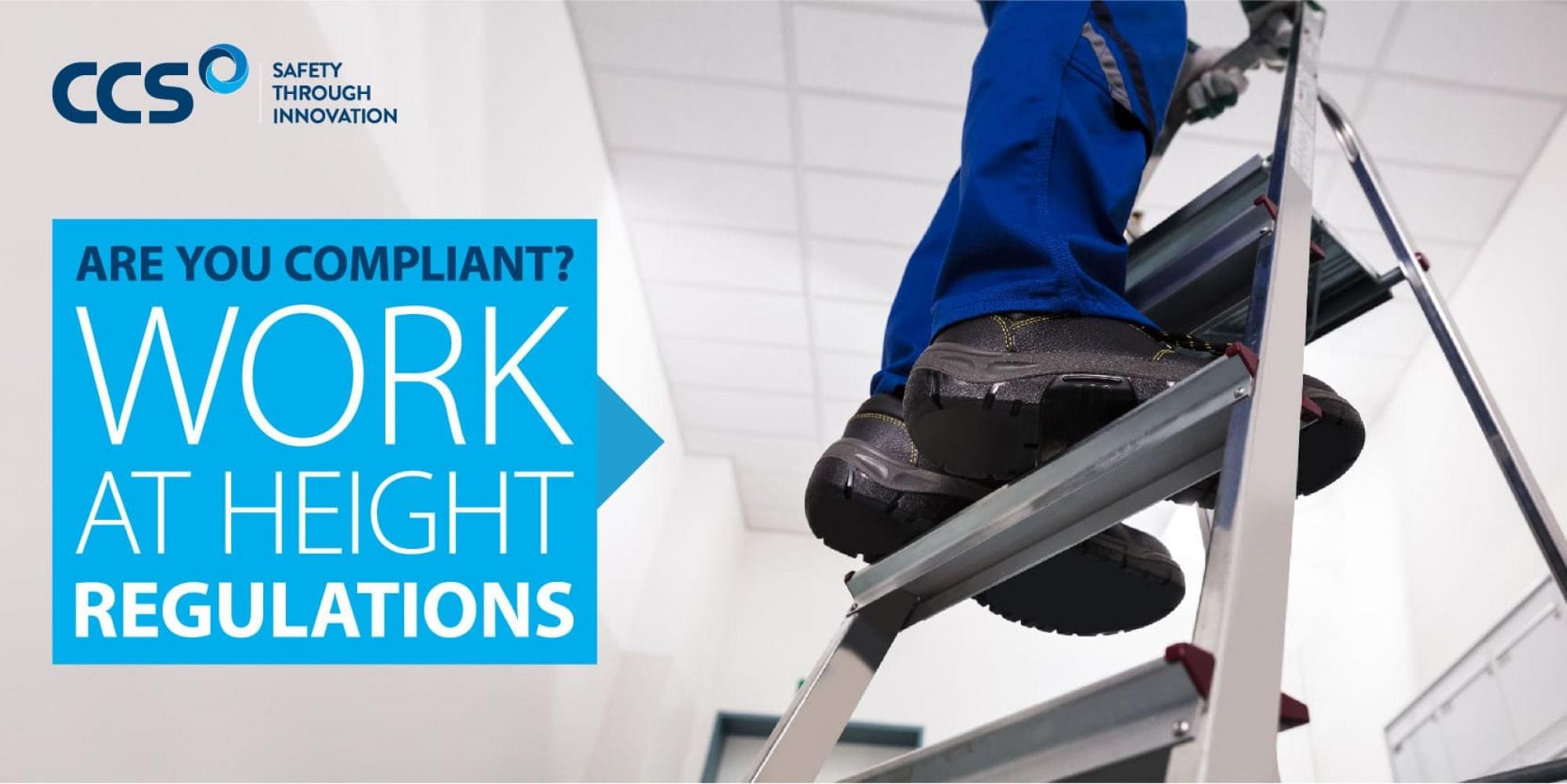CCS Garage Equipment Advice: Work at Height Regulations 2005
11 Mar 2022In this advice note from our CCS Garage Equipment expert team, we look at the Work at Height Regulations 2005 and deliver the information you need to run a safe workshop. CCS Garage Equipment Advice: Work at Height Regulations 2005
CCS Garage Equipment Advice: Work at Height Regulations 2005The Work at Height Regulations 2005 were introduced to prevent death and injury caused by falling from height.Employers and those controlling personnel working at height – for example, building owners with sub-contractors or facilities managers – are required to ensure that work at height is properly planned, supervised and carried out by competent people. Obligations include the requirement to use the right equipment following a risk assessment.Our CCS Garage Equipment consultancy specialists have compiled this quick-reference advice about working at height, employer obligations and precautions you can take and choosing the right equipment.
How is ‘working at height’ defined?
Working at height includes any situation where someone could fall a distance that’s liable to cause injury if no safety precautions have been taken. This might be when working on a ladder, stepladder or a roof, falling through an opening or fragile surface, falling from a truck bed or other vehicle, or falling through a hole in the ground.
Consider:- the height of the proposed working area;
- how long and how often your teams will work at height;
- the condition of the work at height area’s surface.
Common sense is allowed for, and there may be low-risk circumstances where no specific precautions are required.Working on a fragile surface? These may include roofs, roof lights, corroded metal sheets, glass, rotted chipboard, slates and tiles, or non-reinforced fibre cement sheets, and falls from these surfaces make up some of the most common causes of workplace death and serious injury.
What should I do before working at height?
Before working at height, you and your teams should:- avoid working at height if reasonably practicable to do so;
- prevent falls using a safe place of work or the correct equipment; and
- where risk can’t be eliminated and where working at height can’t be avoided, minimise distance and consequences of a fall from height by using correct equipment.
What can I do to keep my teams safe?
There are some basic steps you can take that will protect your team in the workplace, including:- work on the ground as much as possible;
- make sure your team can move safely to and from the work at height area;
- make sure you invest in suitable, stable and strong equipment which is regularly tested, checked and maintained;
- make sure your teams don’t overload or overreach while working at height;
- if working on or near fragile surfaces, take suitable precautions and use safety equipment;
- provide protection from objects which may fall; and
- review and implement emergency evacuation and rescue procedures.
Crucially, make sure that only people with sufficient skills, knowledge and experience work at height, or otherwise that employees in training are supervised by an appropriately skilled person.Training may just be simple on-the-job instructions and guidance for shorter duration tasks, such as tying off a ladder, or it may consist of more complex training and trade certification for tasks such as planning and assembly of scaffolding.
Choosing the right equipment for working at height
As an employer, you must provide the most suitable equipment for the work being carried out, and you must consider factors including working conditions (this might include weather if working outside), the type of work being carried out, how long and how often your teams will be working at height and the risks to everyone’s safety.The use of ladders and stepladders isn’t prevented under the Regulations. Teams should always carry out a pre-use check to ensure ladders or stepladders are safe, picking up on any defects which could potentially lead to an accident.
Working at height: Step-by-step
The
HSE’s step-by-step guide is a useful way of quickly identifying the steps you need to take to ensure safety when carrying out tasks at height in your workplace.
| Can you prevent your team working at height? | - Work from the ground as much as possible
- Use extendable tools
- Install pipes and cabling at ground level
- Lower equipment to ground level to work on it
- Assemble goods at ground level
|
| If not, can you minimise the risk of a fall occurring? | - Use an existing safe working area like a non-fragile roof with permanent guardrail
- Use equipment like a restraint system to prevent people falling
- Use elevated work platforms like a scissor lift, scaffolding or access platform
|
| Where risk of a fall remains, can you minimise the distance or consequences of a fall | - Use safety nets and/or soft landing systems such as air bags
- Use industrial rope access
- Use a fall arrest system with a high anchor point
|
Access platforms & mobile steps from CCS Garage Equipment
CCS Garage Equipment is partnered with Klime-Ezee, a British manufacturer of bespoke access platforms and mobile steps for use across a wide range of industries, from museums and archiving to workshops, stores, warehousing, manufacturing, logistics and industrial settings.
Read our guide to Klime-Ezee’s rangeContact our CCS Garage Equipment team to discuss your access platform, mobile steps or working at height safety requirements and to request a quote. CCS Garage Equipment Advice: Work at Height Regulations 2005
CCS Garage Equipment Advice: Work at Height Regulations 2005